Do you garden in a frost pocket or cold area? See our selection of 10 of the hardiest AGM-winning plants
Some of our favourite shrubs hail from regions where the ground freezes for months on end. This choice of deciduous and evergreen shrubs, including conifers, features some of the most cold tolerant of all garden plants. All surive temperatures below -20°C (-4°F), and have a hardiness rating of H7 - top of the hardiness scale. Furthermore, these plants have all been given the Award of Garden Merit, meaning they're tried and tested varieties that you're likely to find in a nursery or garden centre near you.
H1 - H7 indicated the new hardiness ratings
Full details of hardiness ratings (510kB pdf)
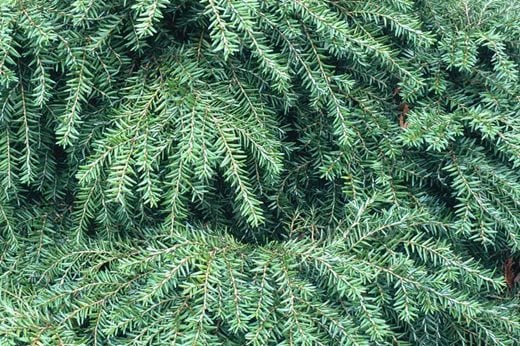 Appealing evergreen
Appealing evergreen
Although the eastern hemlock, Tsuga canadensis, is a stately forest tree, unsuitable for most gardens, the selection, T. ‘Jeddeloh’ is dependably compact. It has an unusual way of growing with branches arching neatly over each other. New growth is a fresh, bright green contrasting with the darker, older foliage. Height to 1m (3ft).
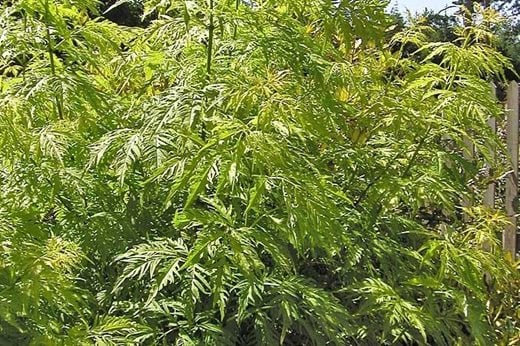 Golden-leaved elder
Golden-leaved elder
We all know elders are tough, in most senses of the word, but Sambucus racemosa 'Sutherland Gold' adds a sense of style that is missing from many cultivars. The jaggedly-edged, bright-yellow foliage keeps its colour well and does not scorch in sun. In late spring the plant is covered in flat heads of white flowers which are followed by heavy clusters of red berries in summer. Height to 2m (6½ft).
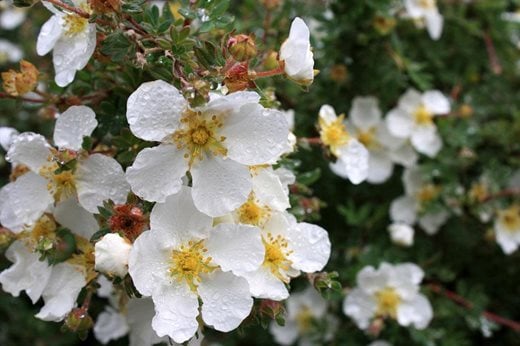 Neat, prolific and long-flowering
Neat, prolific and long-flowering
Growing wild as far north as the Arctic circle, Potentilla fruticosa is exceptionally hardy even in soggy soil. A wide range of cultivars are available, some with pretty foliage. P. ‘Abbotswood’ has pure white flowers set against blue-tinted leaves – a lovely combination – and the flowers open continuously from late spring into the autumn. Named after the famous Cotswold garden. Height to 90cm (3ft).
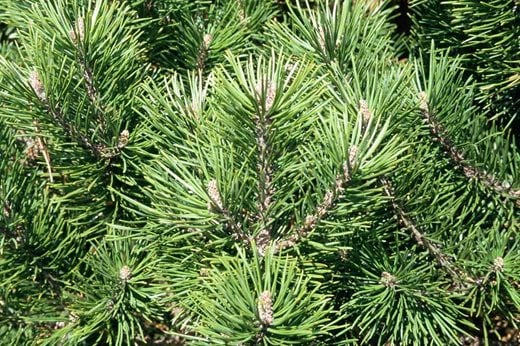 Dwarf, rock garden pine
Dwarf, rock garden pine
Specimen evergreens that are full of character can be hard to find but Pinus mugo ‘Mops’ has all the attributes of mature pines – but at a very manageable size. Ideal at the back of a raised bed, its robust and bushy growth makes a good support for spring clematis as well as a valuable nesting site for birds. It prefers good drainage. Height to 60cm (2ft).
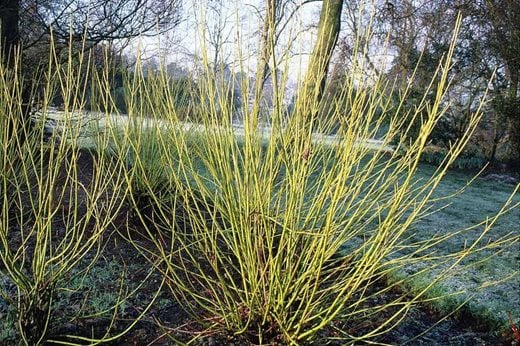 Yellow stems for damp soils
Yellow stems for damp soils
Most of the dogwoods we grow for winter stem colour have red twigs, but Cornus sericea ‘Flaviramea’ is different. The stems are yellow, gleam in the winter sun and when pruned hard every spring, make bright sunny thickets. There is also the bonus of red and yellow autumn leaf colour. Happy in damp soil, but adaptable and good with dusky hellebores. Height to 1m (3ft), when pruned annually.
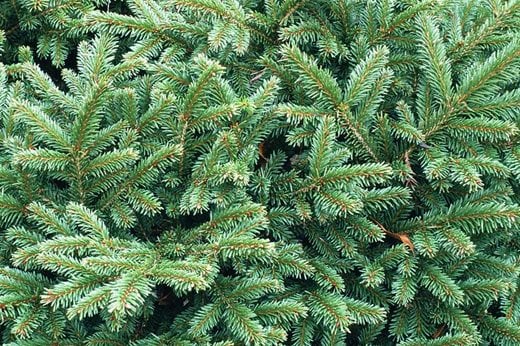 Nifty little spruce
Nifty little spruce
This intriguing little flat-topped version of the familiar Christmas tree, Picea abies ‘Nidiformis’ is packed with horizontal branches, creating a distinctive look. It's especially pretty in winter frost. Developing into a specimen that is wider than it is tall, it is also slow-growing, so is ideal in a container or a small raised bed. Height to 60cm (2ft).
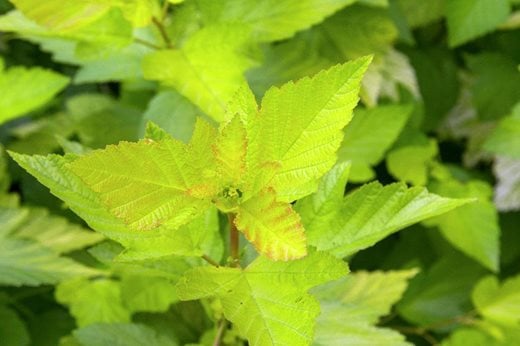 Newly popular and rightly so
Newly popular and rightly so
Physocarpus opulifolius is an exceptionally hardy deciduous shrub that’s become appreciated much more widely in recent years. P. ‘Dart’s Gold’ was the first to be generally grown, its bright yellow spring and summer foliage eventually fades to pale green, but rarely scorches, even in hot dry conditions. Develops an attractive, slightly arching habit as it matures as well as white flowers and black berries. Height to 1.2m (4ft).
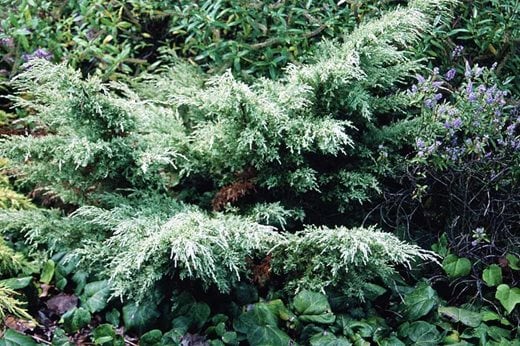 Bright summer sprays
Bright summer sprays
With the valuable qualities of making a striking specimen without ever growing too large, plus an iron constitution, the bright yellow summer foliage of Juniperus × pfitzeriana ‘Sulphur Spray’ turns to an unusual creamy shade in winter. Its angular, semi-prostrate habit with drooping shoot tips is distinctive and it makes an attractive specimen set against plants with bronze or crimson foliage. Height to 1.5m (5ft).
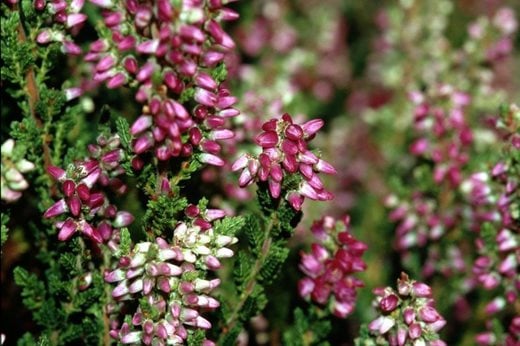 Double-flowered heather
Double-flowered heather
The heather that covers our moors and uplands, Calluna vulgaris, has given rise to a large number of cultivars, but those with double flowers have the ability to last a little longer than most. C. ‘Dark Star’ has rich pink-red flowers from August into November, set against dark, evergreen leaves. Plants will take -35°C (-31°F)! Height to 20cm (8in).
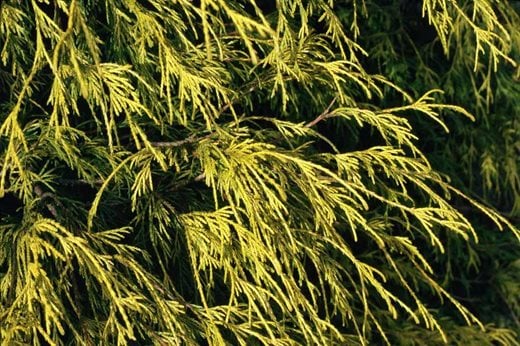 Tough, golden slivers
Tough, golden slivers
We all prefer conifers that are well-behaved and Chamaecyparis pisifera ‘Filifera Aurea’, although its name is a little difficult, is pleasingly modest in size. Slowly developing into an attractively informal mound, its slender threads of golden foliage are carried in weeping sprays.A maturing plant is lovely surrounded by scillas or heathers. Sometimes burns in daylong sun, but usually only in dry soil. Height to 2m (6ft).

